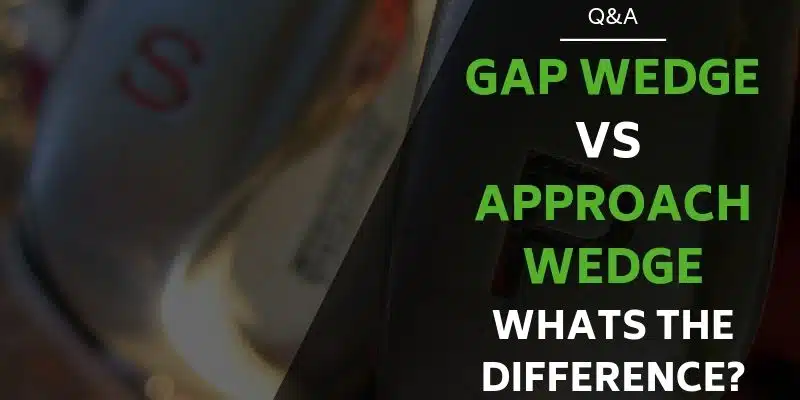As sporting hobbies go, golf is easily one of the most expensive. There are lessons to purchase, green fees to pay, and clothes to buy. And then there’s the equipment: golf balls, umbrellas, tees, and towels. You’ll also need a golf bag… a golf bag full of clubs.
And if you’ve spent any amount of time shopping for a new set of golf clubs, you’ll have quickly realized that they ain’t cheap. It can be frustrating, but in the grand scheme of things, I’d say it’s (usually) a fair price to pay to play such a wonderful game.
But why are golf clubs so expensive? Other than an unassuming piece of metal, what is it that we’re actually paying for?
1. Research & Development (R&D)
You’ll probably hear the term R&D thrown around rather a lot in the modern spheres of golf manufacturing. That’s because it’s the corporate manifestation of what golf is all about: improvement, innovation, and the endless pursuit of perfection.
The likes of Titleist, PING, and Callaway pour millions of dollars into their R&D departments year on year. Golf clubs are constantly being improved and fine-tuned, with new design philosophies being driven by the work of physicists, chemists, computer scientists, mathematicians, technicians, PGA professionals, and turf management specialists.
Thus, every year, we see claims of ‘the next best thing’. Whether or not these claims are justified is a different discussion, but the point is that the research that goes into the designs of new clubs incurs one hell of an expense – and this is accounted for in the pricing of the finished product.
2. Materials
As with any physical product, the cost of the materials is inevitably going to have an impact on the retail price of the golf club.
For many years now, the most commonly used material in the manufacturing of golf clubs has been steel. It’s strong, durable, and cheap. And since most of it is now imported from China, where it is manufactured at fractional costs, steel is actually a force of good, helping to keep the costs of clubs down.
However, some companies, such as PING, have gone to great lengths to ensure that they can continue to manufacture their own steel, here in the US. This is a commendable business practice that has done wonders for PING’s reputation, but it does come at a slightly heavier cost for the consumer.
There’s no doubting the many benefits of working with steel, but it does have its limitations. In fact, when it comes to drivers and woods, steel is now almost entirely redundant. Nowadays, most driver heads are made from titanium – a light-weight, high-strength material, the quality of which has been transformative for the game of golf. Though titanium is also typically manufactured in China, it is a premium material that has a significant impact on the retail price of a number of drivers, woods, and putters.
Additionally, modern driver shafts are almost all made of graphite, rather than steel. Graphite is lightweight, flexible, and works to dampen vibrations. It is less durable than steel, but the extra whip and increased agility of graphite is incredibly beneficial.
Recognizing the usefulness of this unique material, manufacturers have now taken to offering graphite shafts for their irons as well as their drivers. Since they can offer more whip with less clubhead speed, and provide an altogether smoother golfing experience, graphite irons are an excellent choice for beginners, children, ladies, seniors, and anyone who suffers from arthritis.
But these benefits do, unfortunately, come at a cost. Quite simply, graphite is more expensive than steel. The individual materials are more expensive, and the manufacturing process is more complex, so graphite clubs are consequently shelved at a higher price. You can learn more about the differences between graphite and steel shafts here.
3. Manufacturing
At first glance, you wouldn’t think that a whole lot of technical engineering goes into your average golf club. After all, it’s just a thin stick of metal, with a simple rubber grip at one end and an oddly shaped head at the other.
But in modern golf, there is far more to the average clubhead than meets the eye. Beneath the surface is the intricate turnings of sporting science.
Take the Callaway Mavrik Driver, for instance. Within its clubhead, which is not much bigger than a human fist, lie three distinct technologies.
The first is the ‘flash face’, which is essentially a sheet of metal that has been mapped out by the AI of a supercomputer, designed to offer game-changing ball speeds across the entirety of the face. The second is the Jailbreak technology, which consists of two internal bars connecting the sole to the crown, placed there to increase impact power off the face. The third is the Cyclone Aero Head Shape, with a specially shaped sole to optimize the aerodynamics.
The attention to detail that must be required to make such a technical clubhead is, frankly, mind-boggling. And then, the clubhead must be attached to the shaft. And the assembly process of golf clubs is not just a matter of sticking parts together: each club part is individually handled and scrutinized for quality, before being welded together with the utmost care.
Making a quality golf club requires time and diligence. The engineering of drivers especially can be painstakingly intricate, requiring a touch of human brilliance to bring it to life. Thus, the manufacturing process of golf clubs inevitably results in higher retail prices.
4. Marketing
So they’ve done the research, sourced the materials, and pieced them all together. Now, they have to tell you all about it.
Golf club marketing is huge. Like, billions of dollars huge. TV ads, magazine ads, social media ads, celebrity endorsements, tour pro sponsorships… These are just some of the ways in which manufacturers market their clubs. And ultimately, it is paid for by us, the consumer.
But there’s also the unparalleled power of perception of value to contend with.
Basically, the higher the cost of a golf club, the higher its quality is perceived to be. Nowadays, it’s not uncommon to see a driver selling for $500. And as crazy as it sounds, that sort of price has become the accepted norm. This means that, because of general consumer psychology, a driver that is priced at $400 will receive less positive attention than its more expensive competitors, regardless of how they measure up to each other in actual performance.
Consumer perception is everything. And sadly, this encourages manufacturers to flirt with higher and higher prices. Selling clubs at a lower price sends out the message that they are simply not as good, even if that is not the case. So by selling at a higher price, the club gets an instant endorsement of quality.
Final Thoughts
There’s a lot that goes into the manufacturing of golf clubs: research, brain-power, experimentation, computer analysis, material sourcing, marketing, and skilled craftsmanship. All things considered, it’s not really surprising that golf clubs are so expensive.
But even knowing this, it doesn’t take the sting out of having to fork out huge amounts of money to get a decent set of golf clubs. And you have to wonder: is all that research really worth it? Do the tiny, micro-improvements made each year justify the ever-increasing prices? It’s long been a hot topic of conversation, and I’m sure it will continue to be for many years to come.
Just remember that high costs don’t always correlate to high quality. Consider your budget, and what it is you actually want to get out of your new clubs. There are plenty of high-quality putters, wedges, irons, and woods out there that don’t burn a gaping hole in your wallet.
Related Articles
- Best Golf Sets Under $300; Finding The Best Clubs For Your Budget
- Where Are The Best Places to Sell Used Golf Clubs?
- Best Time To Buy Golf Clubs
- The Best Online Golf Stores; For Tech Savvy Golfers
Nick is the founder of GolfSpan and an avid golfer. He's not quite a pro but has over 15 years of experience playing and coaching golfers worldwide. His mission is to bring the golfing community a better experience when it comes to choosing the right golf gear and finding the right setup for your game.






